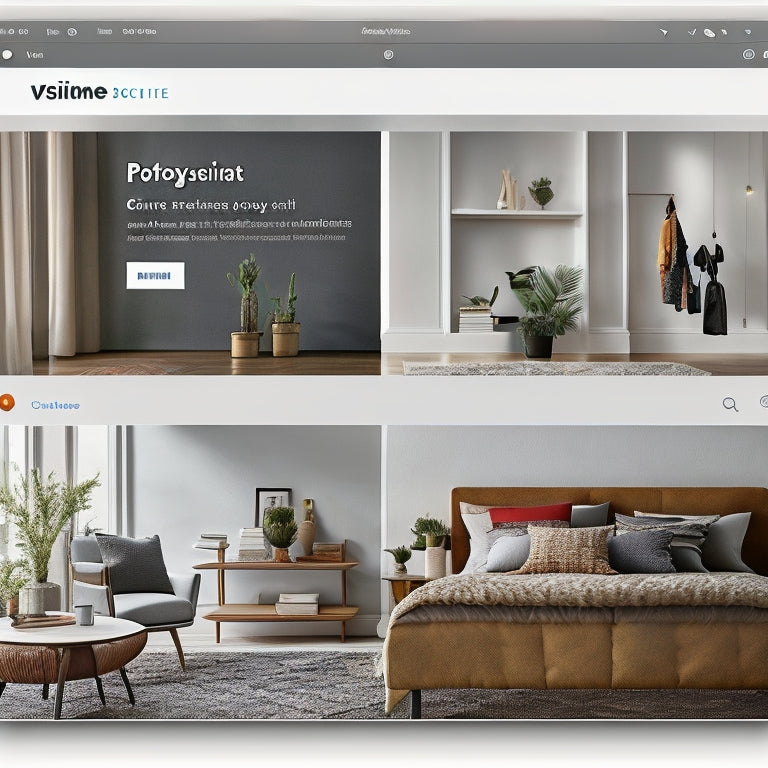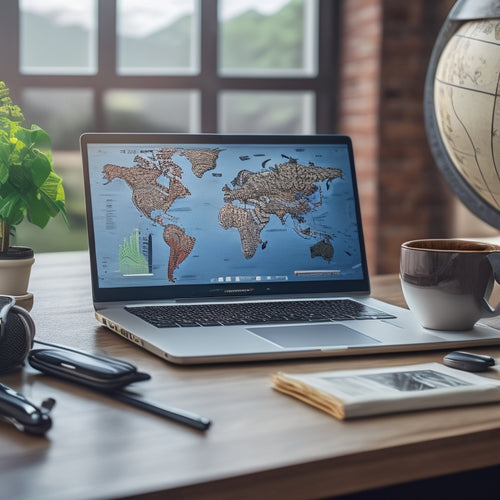
How Do I Optimize My Shopify Image for SEO
Share
This article aims to provide informative and concise guidance on optimizing Shopify images for SEO purposes.
Image optimization plays a crucial role in enhancing the visibility of online stores and improving their search engine rankings.
By following the tips and techniques discussed in this article, Shopify users can effectively optimize their images to boost their website's organic traffic and attract potential customers.
Additionally, this article also provides helpful tutorials for those seeking in-depth knowledge about Shopify image optimization techniques.
- Incorporate relevant keywords into image titles and captions
- Optimize image loading speed and file size without compromising quality
- Improve website design and layout for enhanced user experience
- Monitor and analyze website performance using tools like Google Analytics
Benefits of Image Optimization for SEO
Image optimization plays a crucial role in improving various aspects of a website. This includes higher search rankings, improved website speed, enhanced user experience, increased organic traffic, and better conversion rates.
By optimizing images, website owners can ensure that their sites load quickly. This leads to improved user satisfaction and reduced bounce rates.
Additionally, optimized images contribute to better search engine optimization (SEO). They provide relevant information to search engines, ultimately boosting the website's visibility and organic traffic.
Higher Search Rankings
To achieve higher search rankings, it is crucial to implement effective optimization strategies for Shopify websites. Improving visibility and boosting online presence are key objectives in this endeavor.
One important aspect of optimization is ensuring that relevant keywords are incorporated into the website's content, meta tags, and URLs. By identifying and targeting the right keywords, Shopify websites can attract more organic traffic and increase their chances of appearing in top search results.
Additionally, optimizing the website's loading speed, mobile responsiveness, and overall user experience can contribute to higher search rankings.
It is also important to regularly monitor and analyze website performance using tools like Google Analytics to identify areas for improvement and adjust optimization strategies accordingly.
Improved Website Speed
Improved website speed is crucial for enhancing user experience and reducing bounce rates, leading to higher search rankings and increased organic traffic.
One of the key factors that can significantly improve loading time is optimizing images on a website. Images are often large in file size and can slow down the loading speed of a webpage.
To address this issue, website owners can utilize image compression techniques. These techniques involve reducing the file size of images without compromising their quality. This can be achieved by using image editing software or online tools that offer compression capabilities.
Enhanced User Experience
Enhanced user experience is a critical aspect of website optimization, as it directly affects the satisfaction and engagement of visitors on a webpage. A better page layout and visual appeal play a crucial role in creating an engaging and user-friendly experience.
The page layout refers to the arrangement of various elements on a webpage, such as images, text, and navigation menus. A well-designed page layout ensures that the content is easily readable and accessible, improving the overall user experience.
Visual appeal, on the other hand, refers to the aesthetic appeal of the webpage. It involves the use of visually pleasing colors, fonts, and images that capture the attention of visitors and create a positive impression.
Implementing a better page layout and enhancing visual appeal can significantly improve user experience and increase visitor satisfaction, ultimately leading to higher engagement and conversion rates.
Increased Organic Traffic
Increased organic traffic is a significant measure of the success of a website's search engine optimization efforts. One effective way to improve organic traffic is by optimizing images on the website.
Image compression techniques play a crucial role in this process. They help reduce the file size of images without compromising their quality. This leads to faster loading times, which is essential for providing a positive user experience.
Additionally, using image SEO tools can further enhance the optimization process. These tools assist in optimizing image filenames, alt tags, and metadata, making it easier for search engines to understand the content of the images.
Better Conversion Rates
One factor that contributes to better conversion rates is the usability of the website. A website that is easy to navigate, with clear call-to-action buttons and intuitive design, can significantly improve the user experience and encourage visitors to complete their desired actions.
However, another important aspect of conversion rate optimization is the proper optimization of images for SEO. By implementing image SEO techniques, such as using descriptive file names and alt tags, optimizing image size and format for faster loading times, and including relevant keywords in image titles and captions, website owners can enhance their visibility in search engine results pages and attract more targeted traffic to their site.
This, in turn, can lead to higher conversion rates as the right audience is more likely to engage with the website and make a purchase.
Image Optimization Tips for Shopify SEO
This discussion will focus on key points for optimizing images on Shopify for SEO purposes.
It will cover best practices for file names, the importance of alt text, considerations for image size, and tips for mobile optimization.
File Name Best Practices
Optimizing file names according to best practices is crucial for improving the SEO of Shopify images. When it comes to file names, following certain guidelines can make a significant impact on search engine rankings.
Firstly, it is important to use descriptive and relevant keywords in the file name. This helps search engines understand the content of the image and improves its visibility in search results.
Additionally, it is recommended to keep file names concise and avoid using unnecessary characters or spaces. Using hyphens to separate words is preferred as it enhances readability.
Furthermore, incorporating image compression techniques can also contribute to SEO optimization. Compressed images load faster, improving user experience and reducing bounce rates.
Overall, adhering to file name best practices and utilizing image compression techniques are essential steps to enhance the SEO performance of Shopify images.
Alt Text Importance
The importance of alt text lies in its ability to provide a textual description of an image, allowing visually impaired users to understand the content of the image and improving the overall accessibility of a website.
Alt text, short for alternative text, is a brief description that is added to the HTML code of an image tag. It serves as a replacement for the image when it cannot be displayed, and it is also used by screen readers to describe the image to visually impaired users.
When creating alt text, it is important to use descriptive keywords that accurately represent the content of the image. This helps search engines understand the context of the image and improves its visibility in search results. Moreover, alt text should be concise and to the point, avoiding excessive or unnecessary information.
Following alt text best practices and techniques can greatly enhance the user experience and make a website more inclusive and accessible.
Image Size Considerations
Image size considerations play a crucial role in optimizing web page performance and improving user experience. The size of images used on a website directly impacts the loading time, which is a critical factor for user engagement and search engine optimization (SEO).
Large image files can slow down the loading speed of a webpage, leading to higher bounce rates and lower search engine rankings. To address this issue, image compression techniques can be employed to reduce file size without sacrificing image quality. These techniques involve removing unnecessary data, reducing color depth, and utilizing advanced compression algorithms.
Mobile Optimization Tips
Now that we have discussed the considerations for image size optimization, let's delve into the topic of mobile optimization techniques and responsive design tips.
With the increasing use of mobile devices for online shopping, it is crucial to ensure that your Shopify store is optimized for mobile users. One effective technique is to implement responsive design, which adapts the layout and content of your website to fit different screen sizes. This can be achieved by using CSS media queries and flexible grid systems.
Additionally, optimizing mobile site speed is essential for a seamless user experience. This can be achieved by minimizing CSS and JavaScript files, compressing images, and leveraging browser caching.
Helpful Tutorials for Shopify Image Optimization
One approach to learning about optimizing images for SEO on Shopify is by exploring helpful tutorials that provide step-by-step guidance. These tutorials offer valuable insights into the best practices for optimizing images on the Shopify platform to improve search engine visibility and drive organic traffic to your online store.
By following these tutorials, you can learn how to optimize image file names, alt tags, and descriptions with relevant keywords. Additionally, these tutorials may introduce you to various Shopify image optimization tools that can streamline the optimization process and enhance the overall performance of your images.
With the help of these tutorials, you can gain a deeper understanding of Shopify image SEO and effectively optimize your images to maximize your online store's visibility and success.
Learn More About Shopify Image Optimization Techniques
To gain further knowledge on optimizing images for SEO on the Shopify platform, it is essential to explore additional resources that delve into the various techniques and strategies used in enhancing the visibility and performance of images.
One important aspect of image optimization is image compression techniques. These techniques involve reducing the file size of images without significantly sacrificing image quality. This is important for improving website loading speed, which is a crucial factor in SEO.
Shopify provides various image compression tools and plugins that can be integrated into your online store. These plugins help automate the image compression process, making it easier for you to optimize your images without much technical knowledge.
Frequently Asked Questions
How Do I Choose the Right File Format for My Shopify Images?
When choosing image optimization, it is important to consider the benefits of using different file formats. Each format has its own advantages in terms of quality, compression, and compatibility with various devices and platforms.
Can I Use the Same Image for Multiple Products on My Shopify Store?
Using the same image for multiple products on a Shopify store has implications for SEO. While it may save time and effort, it can lead to duplicate content issues and hinder the optimization of individual product pages.
Are There Any Specific Image Dimensions I Should Keep in Mind for Optimal SEO on Shopify?
Specific image dimensions can be crucial for optimizing SEO on Shopify. Additionally, employing image compression techniques and optimizing image file names can further enhance SEO performance. These strategies aim to improve website visibility and search engine rankings.
What Should I Do if My Shopify Images Are Taking Too Long to Load?
To optimize the image loading speed on a Shopify store, effective image compression techniques can be employed. These techniques reduce the file size of the images without compromising their quality, resulting in faster loading times for improved user experience.
Is It Necessary to Include Alt Text for All My Shopify Images?
The inclusion of alt text for all Shopify images has a significant impact on website accessibility and SEO optimization. Best practices for optimizing alt text should be followed to ensure effective image optimization.
Related Posts
-

5 Proven Ways to Monetize Online Courses
You've created valuable online courses, and now it's time to maximize your earnings. To monetize your courses effecti...
-
Shopify SEO Checklist: Beginner Guide Into Ecommerce SEO
This article provides a beginner's guide to Shopify SEO, focusing on the ecommerce aspect. It outlines the benefits ...
-

Content Shopify Apps Aid Merchants in Creating and Managing Diverse Store Content
This article discusses the benefits of using Shopify apps for content management in order to aid merchants in creati...

